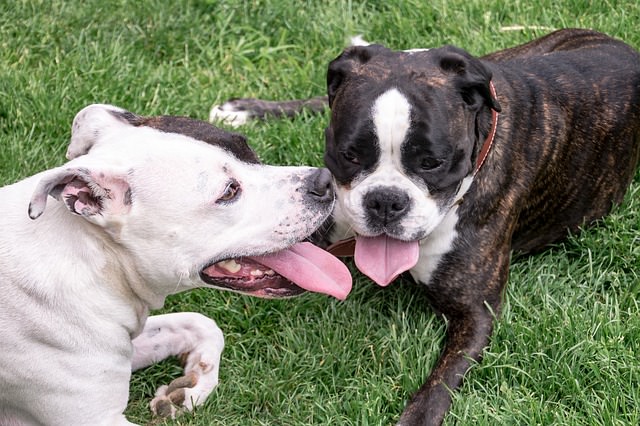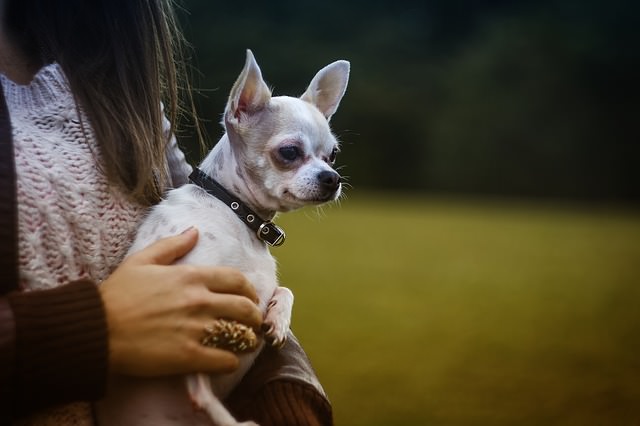We may feel powerless when our pup trembles during thunderstorms or at the sight of another dog, but it’s up to us to help our dogs overcome their fear. Regardless of what they’re afraid of, their feelings should always be taken seriously. It could seem silly and unfounded or result from a traumatic experience. The point is, fear keeps your pet from living a happy and fulfilled life.
As their owner, caregiver, and protector, you can take steps to help your dog feel confident and safe. These training techniques give you somewhere to start.

#1 – Positive Reinforcement
Positive reinforcement is used to teach basic obedience like “sit” and “stay,” and you can also use it to help your pup face their fears. Expose your dog to what he feels threatened by in a controlled environment. Reward confidence with a treat, toy, or praise until the message sinks in. Never punish him for his fear, but don’t reward him for it either. As long as they’re not endangering themselves or anyone else, it’s best to ignore unwanted behavior.
#2 – Desensitization
Try gradually exposing your dog to whatever they’re afraid of to help them feel more in control. If they’re afraid of other dogs, start by placing them somewhere where they can hear and smell the dog but can’t see it. From there, move to an area where they can see the dog, but there’s still distance between them. As your dog shows confidence, start bringing them closer. Keep it slow, and remember you may need to take a few steps backward before you can move forward toward your ultimate goal of direct contact with no fear.

# 3 – Habitual Behavior
For many dogs, new is scary. They’ve never seen a vacuum before, and therefore, it’s a threat. Or they don’t spend time with other dogs very often, and sudden interaction makes them nervous and afraid. In these cases, it’s possible for your dog to work past their fear with regular exposure. If your dog is afraid of the vacuum, try vacuuming more often and see if the situation improves. If they show signs of building confidence, stage frequent opportunities for them to work through the fear on their own. The more they interact with the trigger and come out unharmed, the more confident they’ll be.
#4 – Adjust Your Behavior
Dogs are extremely sensitive to what those around them are feeling. If you’re happy, they’re happy, but if you’re anxious, so are they. Being aware of your dog’s fear is important, but you could be feeding their phobia without realizing it. If you find yourself in a situation you know your dog won’t like, do everything you can to stay calm. Scooping him up to prevent a fearful reaction or acting generally unnerved will only make your dog feel worse and strengthen his belief that he should be afraid. If you’re calm and confident, your dog will follow your lead.

# 5 – Talk to a Professional
No one can read your dog’s mind, but professional trainers and canine behaviorists are especially experienced in understanding the enigma that is the canine brain. A trainer will evaluate your dog’s behavior to find the root cause of the fear. They’ll work with you to come up with an action-based plan, and they’ll support both you and your dog as you work through issues.
Fear is a complicated emotion, and the solution isn’t always simple. The longer it’s left untreated, the worse your dog’s fear will become. Dogs express fear in a number of ways, and whether your pooch chooses to cower or lash out, being afraid is an obstacle preventing them from living their best life. It’s your job to take their feelings seriously and do everything you can to help.
